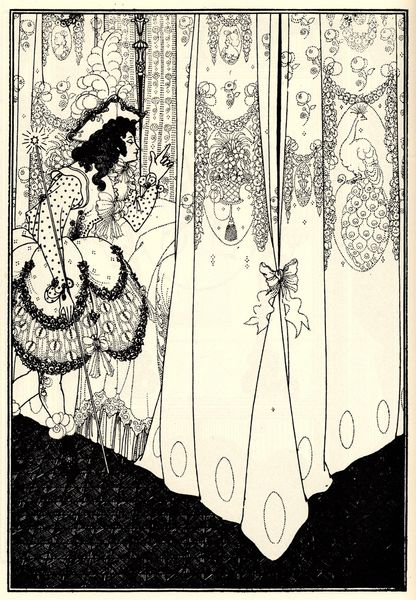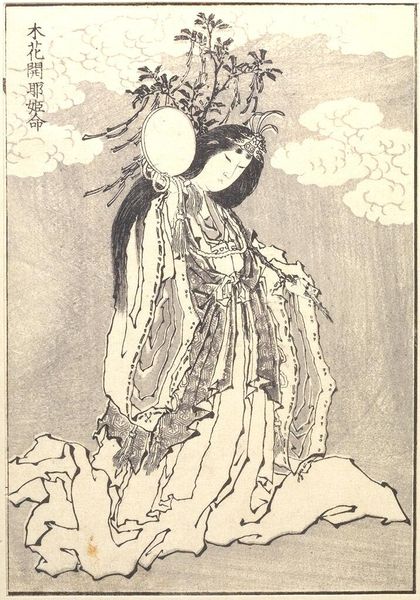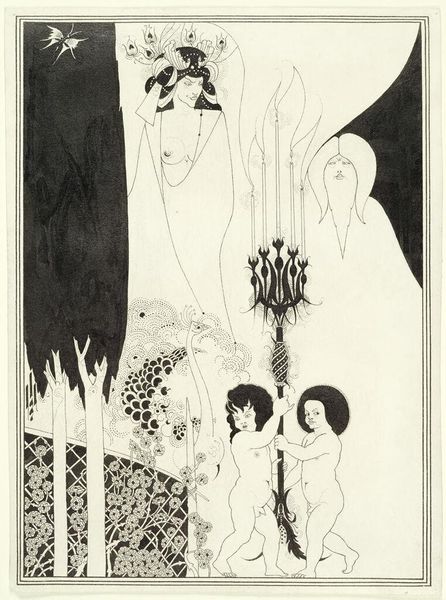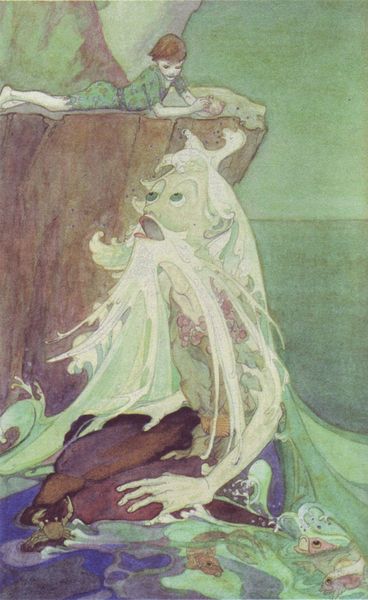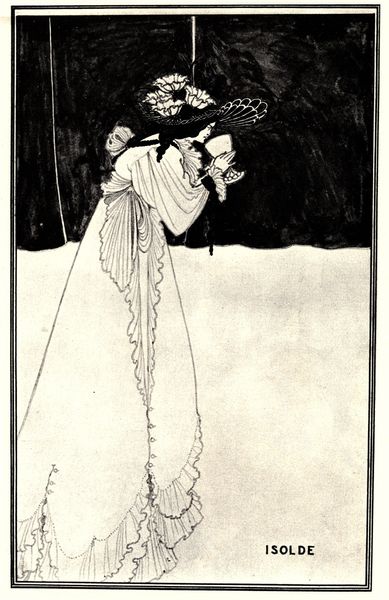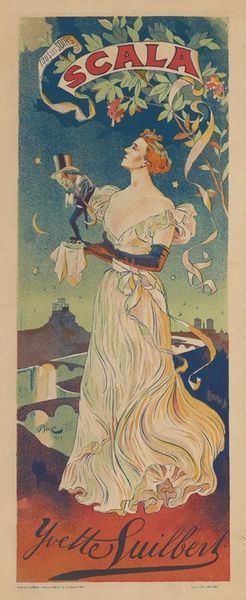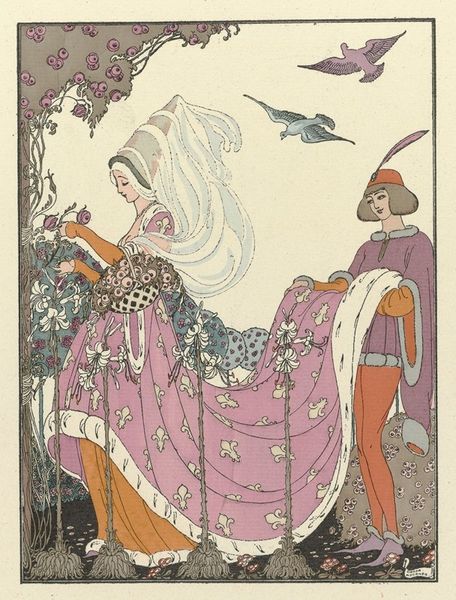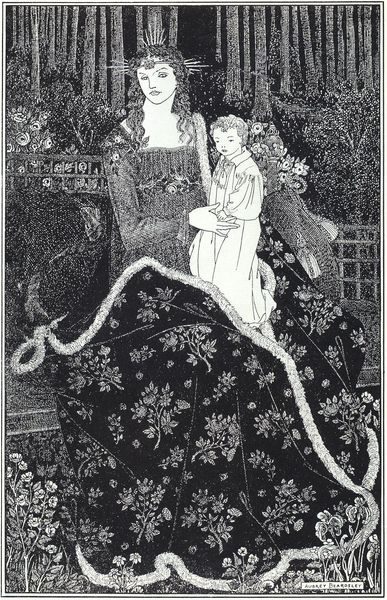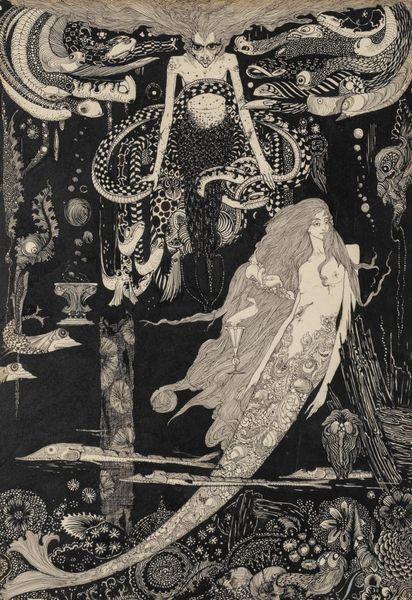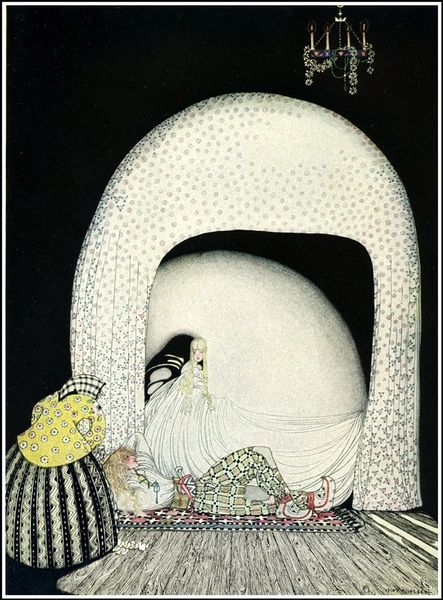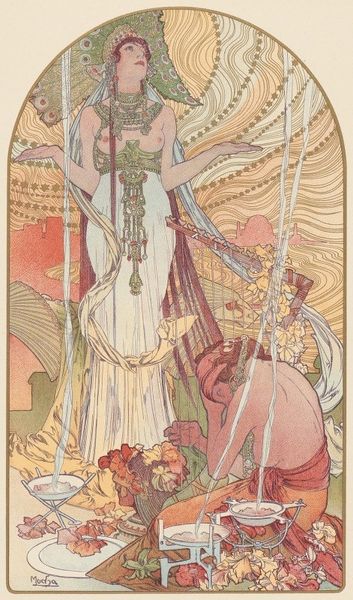
painting, watercolor
#
narrative-art
#
painting
#
fantasy-art
#
figuration
#
watercolor
#
symbolism
#
watercolour illustration
#
mixed media
Copyright: Public domain US
Curator: Kay Nielsen’s watercolour illustration, titled "East of the Sun and West of the Moon," dates back to 1914 and exudes such ethereal calm. Editor: Ethereal is right. The color palette, dominated by these cool blues and whites, immediately pulls me into a dream-like state. There is such lightness of line here. Curator: Yes, the fairytale mood is heightened by the symbolic elements. Look at the woman in the long white gown. It brings up associations with Pre-Raphaelite female figures and how they are coded to the public in displays of purity, spirituality, and, dare I say, commodity. It has an otherwordly charm. But who produced the pigment? Where was it produced? And, also, what labour laws protected, or more likely did not, those makers? Editor: Those are good considerations to take note of. The painting certainly borrows from traditions within the context of illustration but seems more broadly entrenched with fairytales. I mean, the illustration was produced to give the fairytales increased commercial appeal, reaching a broader audience through book publications. Fairytales carry heavy cultural weight and are powerful in that they uphold socio-cultural ideals. Curator: Absolutely, these illustrations gain authority due to their connections to social and cultural symbolism, but there are production and reception considerations that play in, also. For instance, why watercolour? In what ways does Nielsen’s watercolour challenge or reinforce the hierarchical separation of the high art, like oil on canvas, from supposedly ‘lesser’ artistic activities such as painting on paper? The question of materiality is a socio-economic consideration, and helps position how the value is assigned in cultural settings. Editor: Fascinating points! Thinking about that positioning, this also appeared during a surge of public interest in folklore and national identity movements across Europe, shaping how these narratives were read and shared among viewers. It really became part of a larger system of beliefs being actively expressed and solidified as people entered this new, modern era. Curator: I agree entirely! I hadn't considered that aspect quite so keenly, but you've added a fresh layer to my understanding. Editor: And you've highlighted material issues that have deepened mine! It shows how much historical, cultural and economic elements can offer to each other in art analysis.
Comments
No comments
Be the first to comment and join the conversation on the ultimate creative platform.

